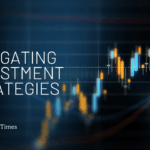Once upon a time, corporate decision-making was guided by instinct, experience, and quarterly reports spread across mahogany tables. Today, a new kind of participant has joined the boardroom — one that doesn’t tire, doesn’t guess, and never forgets: Artificial Intelligence. From forecasting market trends to optimizing strategy, AI has become the silent strategist behind some …
AI in the Boardroom: How Automation Shapes Decision-Making

Once upon a time, corporate decision-making was guided by instinct, experience, and quarterly reports spread across mahogany tables. Today, a new kind of participant has joined the boardroom — one that doesn’t tire, doesn’t guess, and never forgets: Artificial Intelligence.
From forecasting market trends to optimizing strategy, AI has become the silent strategist behind some of the world’s most powerful companies. It’s not just transforming how businesses operate — it’s reshaping how leaders think, plan, and make decisions.
Welcome to the era where automation meets ambition, and data is the new boardroom currency.
The Rise of Intelligent Decision-Making
The modern boardroom no longer relies solely on human intuition. With the explosion of data in every industry — from customer behavior to supply chain metrics — executives now face an overwhelming challenge: how to make sense of it all.
Enter AI.
Artificial Intelligence and machine learning algorithms can analyze billions of data points in seconds, revealing patterns and insights that humans might overlook. These technologies help executives forecast demand, anticipate risks, and identify new growth opportunities with precision.
A recent McKinsey report estimates that AI-driven analytics could add over $13 trillion to the global economy by 2030. It’s clear: companies that integrate AI into their decision-making processes are gaining a sharp competitive edge.
But the real magic isn’t just in automation — it’s in augmentation. AI doesn’t replace human intelligence; it amplifies it.
Data to Decisions: The New Corporate Workflow
In the traditional corporate setup, decisions moved slowly — reports were gathered, analyzed manually, and presented in board meetings weeks later. Today, AI compresses that entire cycle into real time.
Imagine a retail CEO reviewing live dashboards showing which products are trending, where inventory is low, and what social media sentiment looks like — all powered by AI. Within minutes, strategic adjustments can be made to marketing, logistics, or pricing.
In finance, AI models assess credit risks faster and more accurately than humans ever could. In manufacturing, predictive algorithms signal potential equipment failures before they happen, saving millions in downtime.
AI transforms decision-making from reactive to proactive — from waiting for problems to predicting and preventing them.
AI and Strategic Foresight: Predicting the Unpredictable
One of AI’s most valuable contributions to the boardroom is its predictive capability. Business leaders can now simulate various “what-if” scenarios — from economic downturns to shifts in consumer demand — to make informed strategic choices.
For example, supply chain executives can use AI to model disruptions caused by geopolitical conflicts or environmental events. Marketers can forecast how changing trends will impact brand engagement months ahead.
This foresight transforms risk management into opportunity management. Instead of responding to crises, AI empowers organizations to anticipate them — and pivot faster than competitors.
The Human-AI Partnership: Blending Insight and Intuition
While AI provides data-driven clarity, the boardroom’s most valuable asset remains human judgment. Numbers alone can’t capture ethics, empathy, or vision — the qualities that shape long-term strategy.
AI may identify a profitable opportunity, but it’s human leaders who must evaluate whether it aligns with company values, social responsibility, and brand identity.
The most successful organizations are those that foster synergy between human and artificial intelligence. They use AI to inform decisions — not to dictate them. This balance of machine precision and human wisdom is what drives innovation forward responsibly.
Automation in Corporate Governance
AI isn’t only improving what decisions are made — it’s also influencing how they’re made. Corporate governance, compliance, and reporting are becoming increasingly automated.
Advanced analytics systems monitor financial transactions, ensuring regulatory compliance and detecting anomalies that could signal fraud or misconduct. Natural language processing tools summarize complex reports into actionable insights, helping board members digest critical data faster.
In some cases, AI-driven platforms even assess board performance — tracking attendance, engagement, and decision outcomes to promote accountability.
As a result, boardrooms are becoming more transparent, efficient, and data-driven than ever before.
Ethics and Responsibility: The Double-Edged Sword
But with great data comes great responsibility. As AI assumes a larger role in corporate strategy, ethical considerations have taken center stage.
Bias in algorithms, data privacy, and accountability are pressing issues. An AI model is only as fair as the data it’s trained on — and if that data contains biases, the outcomes can perpetuate inequality or flawed assumptions.
Forward-thinking companies are addressing this by creating AI ethics committees and implementing transparency frameworks. These measures ensure that automation enhances trust rather than eroding it.
The future boardroom won’t just be powered by data — it will be guided by principles.
Industries Reimagined by AI Decision-Making
Finance:
AI-driven analytics are transforming portfolio management and investment strategies. Algorithms can detect subtle market signals and execute trades in milliseconds, giving investors an unmatched edge.
Healthcare:
Executives use AI to allocate resources, forecast patient volumes, and streamline medical supply chains. Predictive analytics even help healthcare providers anticipate disease outbreaks and patient needs.
Manufacturing:
AI optimizes production lines, predicts maintenance needs, and improves supply chain logistics — enabling leaner, smarter operations.
Retail:
From dynamic pricing models to personalized customer recommendations, AI is revolutionizing how brands connect with consumers and manage inventories.
Energy:
Utility companies use AI to forecast consumption, reduce waste, and transition to renewable energy sources more efficiently.
Across these sectors, one truth remains: automation is no longer a luxury — it’s a necessity for competitiveness.
The Future Boardroom: Intelligent, Inclusive, and Adaptive
Tomorrow’s boardroom will look very different from today’s. Picture an environment where AI assistants summarize reports, generate projections, and visualize complex data at the click of a button.
Meetings will be shorter, strategies more data-backed, and decisions more dynamic. Board members won’t just discuss outcomes — they’ll interact with predictive simulations showing how choices will impact future performance.
Moreover, automation will allow smaller companies to compete with larger corporations by giving them access to insights once reserved for elite firms with massive analytics teams.
AI is, in many ways, the great equalizer of modern business.
The Human Touch in an Automated Age
Despite the power of automation, leadership in the AI era demands something machines can’t replicate: vision, empathy, and ethical clarity.
The most influential leaders of the future won’t be those who rely solely on data but those who understand how to combine it with creativity and conscience.
AI might process information, but it’s humans who give it meaning. Machines may help us make better decisions, but they cannot define what is right or purposeful.
The boardroom of tomorrow will belong to those who see AI not as competition, but as collaboration — a partner in shaping a smarter, fairer, and more resilient world.
Final Thoughts
Artificial intelligence has moved beyond being a tech trend — it’s now a strategic cornerstone of corporate governance and innovation.
As automation reshapes decision-making, it challenges leaders to rethink their roles, refine their strategies, and embrace a future where intelligence — both human and artificial — coexist in harmony.
The question isn’t whether AI belongs in the boardroom. It already does. The real question is: How will we use it?
Because in the end, AI doesn’t replace leadership — it redefines it. And those who learn to harness it today will be the ones steering tomorrow’s success stories.




